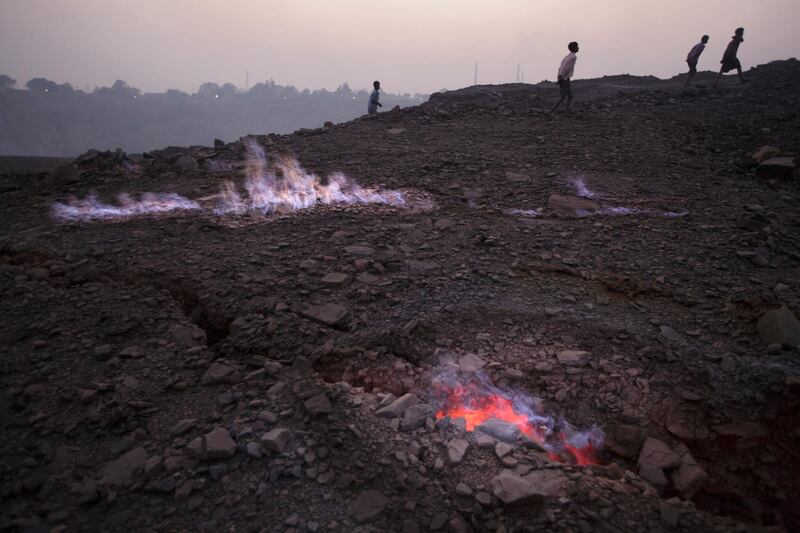India's desperate need to increase energy production without polluting the environment presents the country with a major dilemma.
Solar power, the government's preferred option, would require more than US$100 billion (Dh367bn) and potentially leave it dependent on regional rival China. At the same time the environmental costs of coal-fired power plants, which account for the bulk of India's electricity generation, are becoming painfully clear.
Although winter conditions and seasonal crop-burning affects the quality of air every year in north India, this year the levels of pollution reached as much as 40 times the safe limit set by the World Health Organisation, forcing schools to close on some days. Last year, a farmer walking through his fields in Uttar Pradesh state suffered 70 per cent burns to his feet and ankles when coal-water slurry released by a local power plant seeped underground and caught fire.
Prime minister Narendra Modi has repeatedly stated his desire to move away from fossil fuels, which provide most of India's total power generation of 331,000 megawatts. The rest comes from a mixture of nuclear, hydro, solar and wind.
By 2022, Mr Modi wants increase solar power generation alone to 100,000MW, from 15,000MW at present. But to achieve that target, he says, India will need at least $140bn from private investment and public funding.
When 100 countries meet at the One Planet Summit in Paris on Tuesday, India will be among the biggest developing nations pressing for funds to be made available quickly.
Even so, Mr Modi has placed India's energy needs for its rapidly developing economy above concerns about global climate change.
Climate change “is not of our making. It is the result of global warming that came from prosperity and progress of an industrial age powered by fossil fuel,” Mr Modi said two years ago at the pivotal climate-change summit in Paris.
He said he feared for climate change’s effects on India, but his country would not scale down its economic ambitions just to cut emissions, because this would halt the process of raising millions of citizens out of poverty.
“India’s progress is our destiny and right of our people,” he said.
Roughly 300 million Indians still need to be connected to the electricity grid. The country’s per capita usage of electricity is a third of the global average.
At the Paris summit in 2015, India committed to cutting its emissions relative to gross domestic product by 35 per cent by 2030, when compared to the levels in 2005.
As of May, according to Climate Action Tracker, an independent analytical group, India was on target to meet this commitment. “If all countries were to follow India’s approach, warming could be held below — but not well below — 2°C,” Climate Action Tracker’s assessment reported.
But data and projections yield shifting impressions.
On the one hand, India’s electricity authority predicted in a draft plan last year that it would not need to build more coal-fired plants between 2022 and 2027. Plants already under construction will be completed by 2022.
On the other hand, the state planning body, Niti Aayog, admitted in a report released in August “the reality ... that around three-quarters of our power comes from coal-powered plants and this scenario will not change significantly over the coming decades”.
India is still struggling to find financing for all the renewable energy projects it will need — which means that the temptation to persist with cheap coal will always be present.
The lack of funding is compounded by the problem of technology. India has very few manufacturers of solar power components. To develop these industries, it would have to offer vast subsidies and tax credits — another financial hurdle.
The alternative is to depend upon its regional rival China, which dominates this sector and makes 80 per cent of the world’s photovoltaic modules for solar energy generation.
"India would have to tie its 'energy future' inextricably to the policies of China," Vikram Mehta, the chairman of Brookings India, a New Delhi-based think-tank, wrote in the Indian Express newspaper last week. "Can it afford to do that?"





